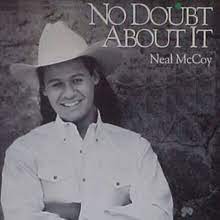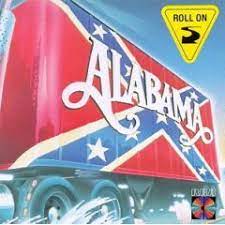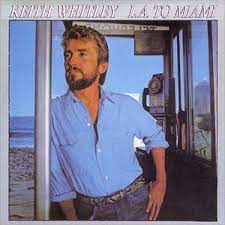Tutorial Pricing: $3.25ea OR any 10 for $10
(use code "Any10410" at checkout)
Paid Requests for $25ea
(comes with any 8 freebies -> so 9 for $25)
100's Of Free Demos & Chord Sheets
- Home
- Very Easy Country Guitar Songs
- Older Female Country Music Singers
Older Female Country Music Singers
On The Acoustic
Thanks for stopping by my older female country music singers page where I have 10 great songs from some of county music's most well known female singers.
Help yourself to the free chord sheets and watch my free demos.
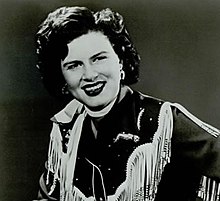
Bonnie Tyler --- It's A Heartache, Total Eclipse Of The Heart
Brenda Lee --- Losing You
Carlene Carter --- Every Little Thing
Chely Wright --- Shut Up And Drive
Crystal Gayle --- I'll Get Over You
Deana Carter --- Strawberry Wine
Dottsy --- After Sweet Memories Play Born To Lose Again
Elizabeth Cook --- El Camino
Faith Hill --- Let Me Let Go
Gail Davies --- Grandma's Song
Ingrid Andress --- More Hearts Than Mine
Kasey Chambers --- Nullabor Song
Kate Campbell --- See Rock City
KD Lang --- Save Me
Kelly Clarkson --- Breakaway
KT Oslin --- Do Ya
Lauren Duski --- Tell Me Why
LeAnn Rimes --- Blue
Lee Ann Womack ---I Hope You Dance, Take Me Back To Texas
Loretta Lynn - Don't Come Home A Drinking With Lovin On You're Mind
Lorrie Morgan --- Except For Monday
Lynn Anderson --- Rose Garden
Mandy Barnett --- Help Me Make It Through The Night
Marie Osmond --- In My Little Corner Of The World
Martina McBride --- Pick Me Up On Your Way Down
Miranda Lambert --- Pushin Time
Olivia Newton John --- Let Me Be There
Patsy Cline --- Crazy, I Fall To Pieces
Patti Page --- It's A Sin To Tell A Lie
Pistol Annies --- Hush Hush
Reina Del Cid --- Jambalaya
Rosanne Cash --- Blue Moon With Heartache
Shelby Lynn - Wall In Your Heart
Skeeter Davis - The End Of The World
Sonia Leigh - My Name Is Money
Susan Jacks - That's Where I Went Wrong
Suzy Bogguss - Aces
Sylvia --- Drifter, Tumbleweed
Tammy Wynette --- Crying In The Rain
Tanya Tucker --- Two Sparrows In A Hurricane
Terri Gibbs --- Somebody's Knockin
Treva Bloomquist --- Ain't No Grave
Vicki Lawrence --- The Night The Lights Went Out In Georgia
Older Female Country Music Singers
Chords, PDF's Demos, Tutorials
Ashley Monroe Songs
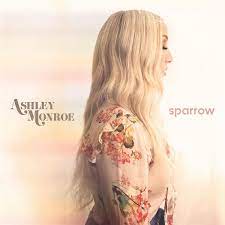
Hands On You is a country song recorded by Ashley Monroe, an American country singer-songwriter. It was released as a single from her fourth studio album, "Sparrow," in 2018.
Written by Ashley Monroe herself,
alongside Jon Randall and Nicolette Hayford, "Hands On You" is a sultry
and introspective ballad.
"Hands On You" showcases Ashley Monroe's distinct vocals, rich with emotion and nuance. The song's production combines traditional country elements with a contemporary twist, incorporating elements of pop and Americana.
Jump To Top
Bonnie Tyler Songs
It's A Heartache ... info soon.
Jump To Top
Total Eclipse Of The Heart ... info soon.
Jump To Top
Brenda Lee Songs
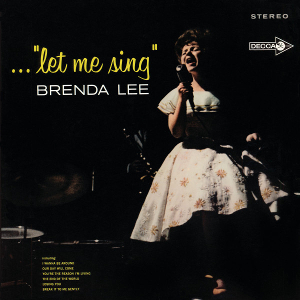
Losing You was a big hit for Brenda Lee in 1963 when she released this track from her album Let Me Sing. It reached #6 on the Billboard Hot 100.
For rhythm here play a root down up root up down up and repeat with a few picking notes throughout. In standard tuning the chords you'll need are E, Abm, A, B7, Gbm, C, G, Am, Em and an F.
Jump To Top
Carlene Carter Songs
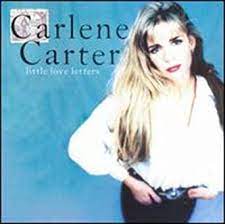
Every Little Thing is a song recorded by Carlene Carter, an American country singer-songwriter. It was released as the lead single from her album "Little Love Letters" in 1993.
Written by Carlene Carter herself, "Every Little Thing" is a heartfelt country ballad that showcases Carter's emotive vocals and vulnerable storytelling. The song explores the aftermath of a breakup and the lingering feelings of love and loss. The lyrics express the pain of moving on while reminiscing about the little details and moments that were once shared with a former lover.
Carlene Carter comes from a musical family, being the daughter of country music legends June Carter Cash and Carl Smith, and the stepdaughter of Johnny Cash. She has carved out her own successful career in country music, blending traditional country elements with rock and pop influences.
Jump To Top
Chely Wright Songs
Shut Up And Drive ... info soon.
Jump To Top
Crystal Gayle Songs
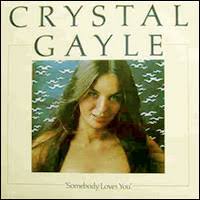
I'll Get Over You is a popular country song performed by Crystal Gayle. Richard Leigh wrote the song, and it came out in March 1976. This song was a big deal for Crystal Gayle because it became her first number-one hit on the country music charts.
It was her seventh song to make it onto the charts, showing that she was becoming more and more popular. The song is about moving on after a breakup, which is a topic many people can relate to.
Crystal Gayle's smooth voice and the song's catchy melody helped make it a hit with country music fans. This success was an important step in Crystal Gayle's career, proving she could create songs that would top the charts.
In standard tuning here play a root down up root up down up and repeats rhythm pattern with some down strokes in places. For chords you'll need a C, Dm, G, Am and a D7. No picking but a few riffs near the end.
Jump To Top
Deana Carter Songs
Strawberry Wine ... info soon.
Jump To Top
Dottsy Songs
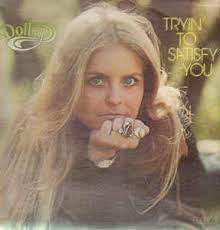
After Sweet Memories Play Born To Lose Again was recorded by Dottsy, a popular country singer in the 1970s and 1980s and hit the airwaves in 1977.
Bobby Braddock wrote this song about heartbreak and moving on after a failed relationship. The lyrics talk about feeling sad but strong after losing love. This song shows off Dottsy's great singing and her talent for expressing emotions through music.
While not her most famous song, it's a good example of her traditional country style that made her successful.
This one played with a capo 2nd fret in standard tuning with the chords G, C, D, G7 and a D7. You can play a root down up root up down up rhythm pattern here with a little picking.
Jump To Top
Elizabeth Cook Songs

El Camino was nominated for Song Of The Year at the 2011 Americana Awards in spite of the fact this song was never released as a single.
"Welder" is Elizabeth Cook's fourth studio album, known for its blend of traditional country sounds with a modern edge. "El Camino" is a standout track from the album, showcasing Cook's storytelling ability and her unique vocal style.
Elizabeth Cook's album "Welder" received critical acclaim for its strong songwriting, engaging performances, and Cook's distinctive voice. While "El Camino" may not have achieved mainstream commercial success, it has been praised by fans and critics for its infectious energy and memorable lyrics.
Jump To Top
Faith Hill Songs
Let Me Let Go ... info soon.
Jump To Top
Gail Davies Songs
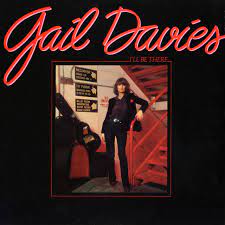
Grandma's Song is a track recorded by Gail Davies. It was featured on her self-titled debut album, "Gail Davies," released in 1978. The song was also included on her later album, "I'll Be There," released in 1983.
"Grandma's Song" is a heartfelt country ballad that pays tribute to the special bond between a granddaughter and her grandmother. The lyrics capture the memories, wisdom, and unconditional love that are often shared between generations. The song's emotional depth and Davies' emotive vocals make it a sentimental and poignant track.
Jump To Top
Ingrid Andress Songs
More Hearts Than Mine ... info soon.
Jump To Top
Kasey Chambers Songs
Nullabor Song ... info soon.
Jump To Top
Kate Campbell Songs
See Rock City ... info soon.
Jump To Top
KD Lang Songs
Save Me ... info soon.
Jump To Top
Kelly Clarkson Songs
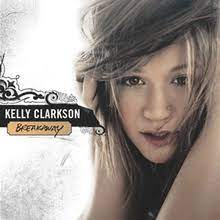
Breakaway is a song recorded by Kelly Clarkson, originally released as the title track and second single from her second studio album, "Breakaway," in 2004. The song was co-written by Avril Lavigne, Bridget Benenate, and Matthew Gerrard.
"Breakaway" is a powerful pop-rock anthem that speaks to the desire for independence, self-discovery, and following one's dreams. The lyrics express a longing for freedom from limitations and the courage to embrace new opportunities. The song resonates with listeners who may feel trapped or unsatisfied with their current circumstances, inspiring them to break free and pursue their aspirations.
"Breakaway" helped establish Kelly Clarkson as a pop powerhouse and showcased her strong and versatile vocals. The song became an anthem for many, encapsulating themes of self-empowerment and personal growth. Its universal message continues to resonate with listeners, making it a fan favorite and a significant part of Kelly Clarkson's discography.
Due to its popularity, "Breakaway" has been covered and performed by various artists, solidifying its status as a modern pop classic.
Jump To Top
KT Oslin Songs
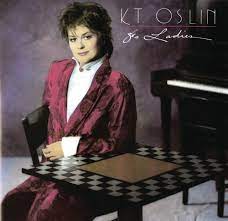
Do Ya is a country song recorded by the late American country singer-songwriter KT Oslin. It was the first single from her second album, "This Woman." The song mixes country, pop, and R&B styles.
"Do Ya" is about a confident woman asking a man to show he really likes her. It's a fun and strong song that shows off KT's clever writing.
The song became very popular, reaching number one on the country music charts and even playing on pop radio stations. It won KT a Grammy Award and made her one of the biggest country stars of the late 1980s.
For rhythm here you'll be blending in some bass riffs as you do a down down up down up down up and repeat rhythm pattern. Use the chords G, C, D, A7, and a G7. There is no lead required here in standard tuning.
Jump To Top
Lauren Duski Songs
Tell Me Why ... info soon.
Jump To Top
LeAnn Rimes Songs
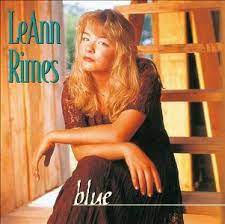
Blue is a country song recorded by LeAnn Rimes. It was released as the debut single and the title track of her first studio album, "Blue," in 1996 when she was just 13 years old.
"Blue" is a traditional country ballad that showcases Rimes' powerful vocals and mature sound beyond her years. The song tells the story of a young girl who is heartbroken and feeling blue after her love has left her. The lyrics express the feelings of loneliness, longing, and sadness associated with a lost love.
Jump To Top
Lee Ann Womack Songs
I Hope You Dance ... info soon.
Jump To Top
Take Me Back To Texas ... info soon.
Jump To Top
Loretta Lynn Songs
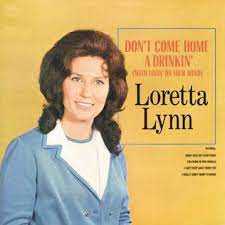
Don't Come Home a Drinkin (With Lovin' on Your Mind)" is a classic country song recorded by Loretta Lynn. She wrote it with her sister Peggy Sue Wells. It was the main song on her album with the same name from 1966.
The song is about a woman who's tired of her husband drinking and cheating. She tells him not to come home expecting love if he's been unfaithful.
This song became Loretta's first big hit, reaching number one on the country music charts. It showed off her strong voice and brave songwriting. People liked how honest and direct it was.
For this one play root down up root up down up and repeat rhythm pattern in standard tuning. A little picking here with the chords D, G, A, A7 and an E.
Jump To Top
Lorrie Morgan Songs
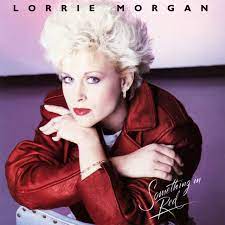
Except For Monday is a country song recorded by Lorrie Morgan, an American country music singer. It was released as the second single from her third studio album, "Something in Red," in 1991.
Written by Reed
Nielsen and Wendy Waldman, "Except for Monday" is an upbeat and catchy
country-pop song. It tells the story of a woman who finds solace and joy
in her relationship, even though life may throw challenges and
disappointments her way.
"Except for Monday" became one of Lorrie Morgan's biggest hits and remains one of her signature songs. It achieved significant success on the country charts, reaching the number one spot on the Billboard Hot Country Songs chart.
Jump To Top
Lynn Anderson Songs
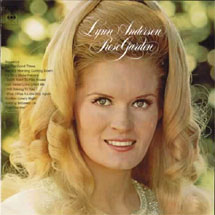
Rose Garden is a famous song written by Joe South in 1967. At first, a few different singers recorded it, but it didn't become a big hit right away. In 1970, country singer Lynn Anderson decided to record the song. At first, her producer didn't think it was right for her, but Anderson convinced him to let her try.
It turned out to be a great decision! The song became a huge success, not just in country music but also on pop charts. It was popular all over the world and hit number one in many countries. Anderson's version of "Rose Garden" was so good that she won a Grammy Award for it in 1971.
This song helped make Lynn Anderson famous and is still remembered as one of the biggest country-pop crossover hits of its time.
Play a steady down up down up with some walking bass notes in this one. No lead however in standard tuning and a capo 2nd fret. For chords you'll need a C, Dm, G, F, A#, A7 and an Fm.
Jump To Top
Mandy Barnett Songs
Help Me Make It Through The Night ... info soon.
Jump To Top
Marie Osmond Songs
In My Little Corner Of The World ... info soon.
Jump To Top
Martina McBride Songs
Pick Me Up On Your Way Down ... info soon.
Jump To Top
Miranda Lambert Songs
Pushin Time ... info soon.
Jump To Top
Olivia Newton John Songs
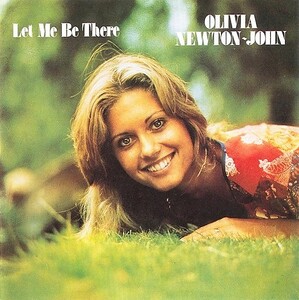
Let Me Be There was a single by Olivia Newton John in 1973 from the album of the same name. The track was a top 10 hit in both Canada and the US.
This one I play with drop D tuning in the key of D with additional chords, G, A, and E and with a few riffs throughout. A root down up root up down up rhythm pattern will work and a steady shuffle during the chorus. The chords will change and you'll also need the E, A, Gb and B7 but no lead here.
Jump To Top
Patsy Cline Songs
Crazy .... info soon.
FREE LESSON
Jump To Top
I Fall To Pieces ... info soon.
Jump To Top
Patti Page Songs
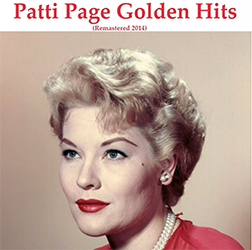
It's A Sin To Tell A Lie first hit the scene in 1936. Over the years it's been recorded nearly 100 times, including by Patti Page in the 1950s.
This track can be found on a few compilation greatest hits album from Patti Page.
A capoed 3rd fret works here in standard tuning with a bit of lead work. For chords you'll need D, Faug, Em, Dm7(9), Em, A7. Gb7, G, E7, Dm(add9), Gm and a B7. Play a root down up down up and repeat rhythm pattern for this one.
Jump To Top Of Older Female Country Music Singers
Pistol Annies
Hush Hush ... info soon.
Jump To Top Women Of Country Music
Reina Del Cid Songs
Jambalaya ... info soon.
Jump To Top
Rosanne Cash Songs
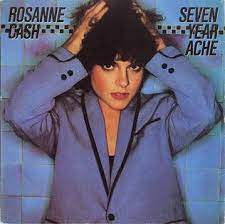
Blue Moon With Heartache is a single in 1984 and is included on her album "Rhythm & Romance" from the same year.
"Blue Moon with Heartache" is a country-pop ballad that showcases Cash's emotive vocals and storytelling abilities. The song explores the theme of heartbreak and the lingering emotions that come with lost love. The lyrics paint a picture of a broken-hearted individual who finds solace in the melancholic beauty of a blue moon, even though it serves as a reminder of their pain.
"Blue Moon with Heartache" was a moderate success on the country music charts, reaching the top 20 on the Billboard Hot Country Singles chart.
Jump To Top
Shelby Lynn Songs
Wall In Your Heart ... info soon.
Jump To Top
Skeeter Davis Songs
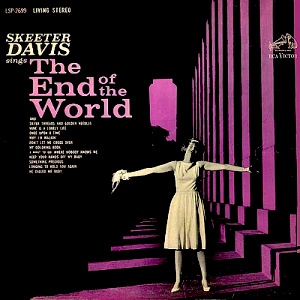
The End Of The World was released by Skeeter Davis as a single back in 1963 and the song was a top 5 on several different charts at the same time.
Chet Atkins produced the song and famous pianist Floyd Crammer played piano on the track.
For this one you'll need some arpeggio in the beginning with a 1-2-3 up down up and then just play rhythm. No lead work here with a capo 3rd fret in standard tuning. The chords are G, D, Em, Bm, Am, E7, Cm, C, D7, G#, D#, F, F#, A#m and C#.
Jump To Top
Sonia Leigh Songs
My Name Is Money ... info soon.
Jump To Top
Susan Jacks Songs
That's Where I Went Wrong ... info soon.
Jump To Top
Suzy Bogguss Songs
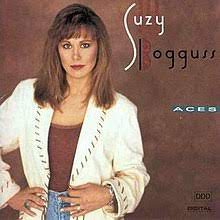
Aces is a country song recorded by Suzy Bogguss. It was released as the title track and lead single from her third studio album, "Aces," in 1991.
Written by Cheryl Wheeler, "Aces" tells the story of a woman who has overcome heartbreak and adversity in her life.
Upon its release, "Aces" became one of Suzy Bogguss' signature songs and a significant hit on the country music charts. It reached the top 10 on the Billboard Hot Country Singles & Tracks chart, further solidifying Bogguss' success in the country music industry.
Jump To Top
Sylvia Songs
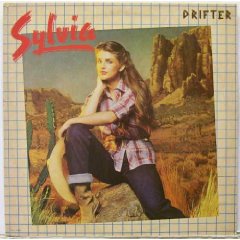
Drifter was the first single from the album of the same name released by Sylvia back in 1981. Four other sounds were released from this album and they all became top 10 hits.
This one in standard tuning with a capo 4th to keep the original key. You can play a root down up root up down up rhythm pattern or a root down up down up root up down up pattern. A few riffs to be picked out with the chords Em, C, Am, B7, G and A Bm.
Jump To Top
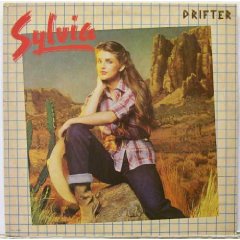
Tumbleweed was one of six singles released from her 1981 album Drifter. Four of the six songs made it into the top 10 including this track at #10 on the US country chart.
I play a shuffle rhythm in the chorus with a root down up down up root up down up but a simple root up down up in the verses and in standard tuning with a capo 2nd fret. No lead here with the chords G, Em, Am, D, Ddim, Bm, Cm and an A7
Jump To Top
Tammy Wynette Songs
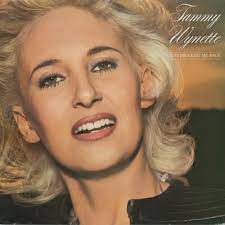
Crying In The Rain was a Tammy Wynette song on her 1981 album "You Brought Me Back." This sad country song is about someone feeling heartbroken over a lost love, especially on rainy days.
While not as famous as her biggest hits, it shows off Tammy's great singing and ability to tell emotional stories through music. This song is different from the one with the same name by the Everly Brothers.
Even though it wasn't a huge hit, "Crying In The Rain" is still an important part of Tammy Wynette's music collection.
With a capo on the 2nd fret you can play a 1-2 up down up rhythm pattern in standard tuning with the chords D, G, A, Gb, Bm, Em, A7 and an E7. No picking in this one.
Jump To Top
Tanya Tucker Songs
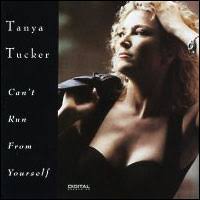
Two Sparrows In A Hurricane was a number 2 hit for Tanya Tucker on the country charts back in 1992.
A music video was produced to promote the single.
For rhythm here play a 1-2-3 up down up down up and repeat. No lead here and for chords you'll need a G, C, D, Am, A7, Db, D, E, A, B7 and Bm in standard tuning.
Jump To Top
Terri Gibbs Songs
Somebody's Knockin' ... info soon.
Jump To Top
Treva Bloomquist Songs
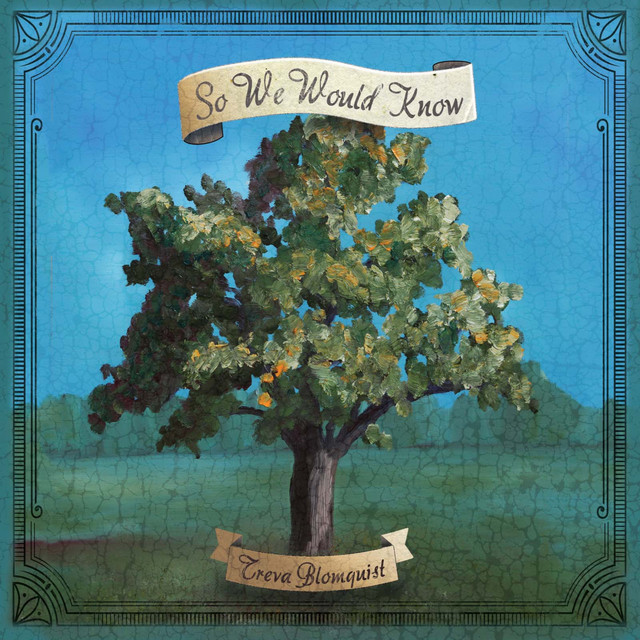
Ain't No Grave was a track on her album "And We Should Know" from 2001 and it's worth noting that the title "Ain't No Grave" is also associated with a traditional gospel song. The gospel song "Ain't No Grave (Gonna Hold My Body Down)" has been recorded by various artists over the years and has roots in African American spiritual music.
The gospel song is characterized by its uplifting and triumphant message, expressing the belief in the resurrection and the notion that death has no power over the faithful. The lyrics often emphasize the idea that even in the face of death, one's spirit remains unshakable and will transcend the grave.
Jump To Top
Vicki Lawrence Songs
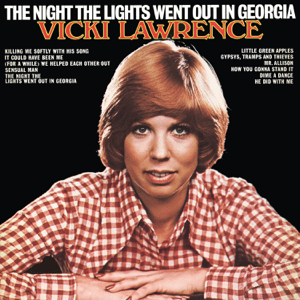
The Night That The Lights Went Out In Georgia is a track from the 1973 album of the same name from Vicki Lawrence. She had #1 in both Canada and the US with this number and it was later covered by country artist Reba McEntire in 1991.
For rhythm here play a down down up down up down up with capo 3rd fret in standard tuning. For chords you'll use the Am, G, D, E7, Gbm, B7, Dbm and an Em. No lead work here.
Jump To Top Of Older Female Country Music Singers
Thanks for stopping by this older female country music singers page and I hope the info here was helpful.
If you enjoyed this older female country music singers page, you might also like ... (click images)
Homepage
Very Easy Country Guitar Songs
